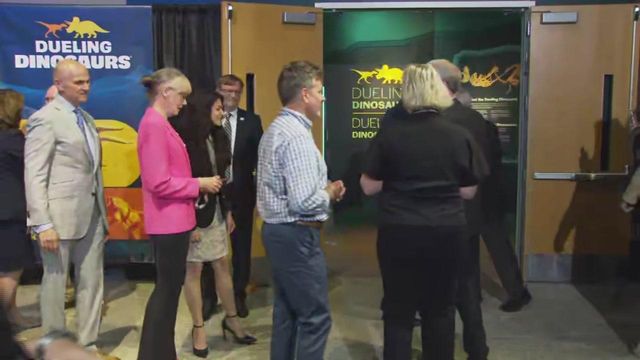New summer exhibition at NC Museum of Natural Sciences expands the idea of paleontology

By Abbey Slattery, WRAL Digital Solutions
This article was written for our sponsor, the North Carolina Museum of Natural Sciences.
290 million years ago, dinosaurs didn’t roam the earth — but something else did.
Permian Monsters are creatures that predate dinosaurs and share more mammalian traits. At Raleigh’s North Carolina Museum of Natural Sciences, the newest exhibition, “Life Before Dinosaurs: The Permian Monsters,” showcases these bizarre beings.
“The most exciting thing about the Permian Monsters is that they include some of our own ancestors. Before the dinosaurs themselves took over, these mammal ancestors — you might call them protomammals — were the dominant forms of life,” said Christian Kammerer, P.h.D, research curator of paleontology at the NC Museum of Natural Sciences. “They don't look like mammals. They're very strange and unusual-looking creatures — the name monstrous is appropriate when applied to them.”
The age of the Permian Monsters ended with a mass extinction event, wiping out 90% of all species on the planet at that time.
Kammerer’s research is focused on this Permian–Triassic extinction. While he often travels around the world for fieldwork, some of his digs take place around the Triangle, since the area was actually built on Triassic rock.
Several creatures that Kammerer has discovered and described will be featured in the exhibit.
“I've actually worked on Permian animals from every continent, so we're going to be showing an array of those from lots of different areas as part of this exhibit,” said Kammerer. “It's part of the larger message, which is that when these animals were alive, there was only one continent: the supercontinent Pangea. So you were getting these sorts of animals all over the world.”
Permian Monsters are distinctive creatures and include everything from dinosaur-like creatures with sabertooth fangs to shark-like creatures with circular saw-shaped teeth.
While the museum’s new exhibit is a traveling exhibit, Kammerer’s research adds more content and a local focus. Kammerer worked closely with Ben Richardson, the museum’s exhibit developer, to completely rehaul the exhibit’s content to reflect the latest evidence from the world of Permian paleontology, as well as his own research additions.
“We wanted to introduce some of the cutting-edge research that Christian had been doing by way of displaying some of these actual specimens that he discovered in the form of replica models. At least one of them, a specimen called Kongonaphon, was a reconstruction model that he had commissioned, and we're including that as well,” said Richardson. “There are about six of these different specimens that Christian has helped to name that we’re displaying in one section of the museum, and we have various write-ups for these particular specimens that Christian and I worked on to call attention to the exciting things that he's found out about Permian Life.”
In addition to replicas and custom illustrations of Kammerer’s work, the exhibition also features skeletal recreations and full-size life models of Permian Monsters. The exhibit panels are in both English and Spanish.
“What's new and novel about this experience for museum visitors is seeing something that many of them probably haven’t seen before — the idea of a massive species that are not dinosaurs roaming the planet,” added Richardson. “It also ties into a lot of interesting concerns and debates that are very much present in the moment, like climate change and mammalian evolution.”
Alongside the exhibition, the museum will also be hosting a lecture series, with talks from Kammerer as well as other researchers from across the country.
The museum's most recent traveling exhibit, “Exquisite Creatures,” closed in 2022. “Life Before Dinosaurs” continues the museum’s aim to bring engaging traveling exhibits to the area.
“We wanted our next exhibit to be immersive and visual. You're going to see lots of large mural artwork that’s going to take you back to this time period. We've had a lot of fun with the lighting design in this one, making it a little theatrical, so it takes you back, but it's very artistic at the same time,” said Javan Sutton, head of exhibits. “We really tried to capture the attention of multiple ages within this exhibit. Kids are going to be captivated by all of the moving models in the exhibit and life-size replicas of all of these creatures, then adults are going to be equally drawn to things like the content and the mounted skeletons.”
This article was written for our sponsor, the North Carolina Museum of Natural Sciences.











